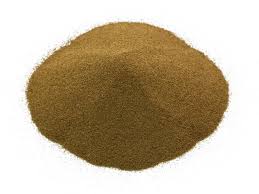Tantalum Carbide (TaC) Powder (Nanopowder and submicrons)
Tantalum Carbide (TaC) Powder is a refractory ceramic material composed of tantalum and carbon. Tantalum Carbide (TaC) are availiable in nanopowder, submicron particles, and micron powder form. Super-fine Tantalum Carbide submicrons are usually manufactured via Vapor-Phase Synthesis and TaC nanoparticles are produced via Spark Plasma Sintering (SPS). TaC powder is used as an additive in tungsten carbide cutting tools, as a coating to prevent erosion and oxidation, and as a component in 3D printing materials.
Princeton Powder is a leading supplier of Tantalum Carbide refractory ceramic powder. Tantalum powders including Tantalum Nanoparticles, Tantalum Tungsten gas atomized powder, and Tantalum Disilicide powder are for sale in bulk.
Formula | Tantalum Carbide TaC |
Morphology | Spherical or irregular |
Appearance | Brown powder |
Particle Size | -325 mesh, 1-10 um, can be customized |
Melting Point | 3,880 °C |
Density | 14.5 g/cm³ |
CAS Number | 12070-06-3 |
Purity | 99%-99.9% |
Tantalum Carbide (TaC) Powder Description
Tantalum Carbide (TaC) is a refractory ceramic material known for its extreme hardness and high melting point. Tantalum Carbide (TaC) powder is an ultra-high melting point material (~3880°C) with exceptional hardness (16-20 GPa), high density (14.5-14.7 g/cm³), and excellent thermal conductivity (~22 W/m·K). It’s commonly used in various high-temperature applications, including cutting tools, abrasives, and coatings.
Tantalum Carbide powder is available in various grades, including different particle sizes and purities, depending on the application requirements.
Tantalum Carbide Powder Manufacturing method (Vapor-Phase and Spark Plasma Sintering)
- Vapor-Phase Synthesis: Tantalum halides (e.g., TaCl₅) and hydrocarbon gases are reacted at high temperatures, producing ultra-fine submicron TaC particles with controlled size and purity.
- Spark Plasma Sintering (SPS): This method combines mechanical and thermal processes to produce dense TaC nanopowders with minimal grain growth.
- Mechanical Milling: For specific applications, powders are further refined through ball milling to achieve uniform particle distribution in the nano or submicron range.
Each process is tailored to meet application-specific requirements such as particle size, morphology, and purity.
Main properties of Tantalum Carbide Powder
- High Melting Point
- Hardness: TaC is extremely hard, offering excellent wear resistance.
- Thermal and Electrical Conductivity: excellent thermal conductivity and moderate electrical conductivity
- Chemical Stability: resistant to oxidation and corrosion in inert or vacuum environments
- Crystal Structure: face-centered cubic (FCC) crystal structure
Chemical Composition/Particle Size of Tantalum Carbide Powder
Product | Particle Size (μm) | Chemical Composition (%) | ||||||||||
Total Carbon | Free Carbon | Impurity (%max) | ||||||||||
Nb | Fe | Si | Al | Ti | O | N | Na | Ca | ||||
TaC-1 | 0.6-0.8 | 6.2±0.2 | ≤0.15 | 0.1 | 0.05 | 0.01 | 0.005 | 0.01 | 0.40 | 0.2 | 0.005 | 0.01 |
TaC-2 | 0.8-1.0 | 6.2±0.2 | ≤0.15 | 0.1 | 0.05 | 0.01 | 0.005 | 0.01 | 0.30 | 0.2 | 0.005 | 0.01 |
TaC-3 | 1.0-1.5 | 6.2±0.2 | ≤0.15 | 0.1 | 0.05 | 0.01 | 0.005 | 0.01 | 0.20 | 0.2 | 0.005 | 0.01 |
TaC-4 | 1.5-2.0 | 6.2±0.2 | ≤0.15 | 0.1 | 0.05 | 0.01 | 0.005 | 0.01 | 0.15 | 0.2 | 0.005 | 0.01 |
Application of Tantalum Carbide Powder
Tantalum Carbide (TaC) powder is used in cutting tools to enhance wear resistance, spacecraft heat shields for thermal protection, and turbine blades to prevent erosion. It is also applied in high-temperature electronics and 3D printing materials for wear-resistant components.
Tantalum Carbide Powder Scholar Articles
Synthesis of ultra-fine tantalum carbide powders by a combinational method of sol–gel and spark plasma sintering
Abstract: A variety of methods have been reported for the preparation of TaC powders, such as self-propagating-high-temperature synthesis (SHS) [6], molten salt synthesis [7], metal thermal reduction [8], [9], sol-gel process [10], [11], [12], liquid precursor conversion method [13], [14] and chemical vapor deposition (CVD) [15]. Among these methods, the sol–gel process is an effective method to obtain ultra-fine TaC powders because of the intimate contact of the reagents at a molecular or colloidal scale [10]. Yan et al. [11] synthesized TaC powders with a particle size of about 30 nm at 1500 °C using tantalum alkoxide, allyl-functional novolac resin and acetylacetone as raw materials.
FAQ Tantalum Carbide Powder
What sizes are available for TaC powder
TaC powder is available in nano, sub-micron, and micron sizes, depends on various industrial and research applications.
What manufacturing processes are used for TaC powder
TaC is produced through methods such as carbothermal reduction, vapor-phase synthesis, spark plasma sintering, and mechanical milling.
What are the key properties of TaC powder
TaC features exceptional hardness (16-20 GPa), high density (~14.5 g/cm³), excellent thermal conductivity (~22 W/m·K), and resistance to wear, oxidation, and high temperatures.
Can TaC powder be customized
Yes, particle size and purity levels can be tailored to meet specific application requirements.
How is TaC powder packaged and stored
TaC powder is typically packaged in airtight containers and should be stored in a dry, inert atmosphere to prevent oxidation or contamination.
What safety precautions should be taken when handling TaC powder
Use protective equipment like gloves, masks, and goggles, and handle in a well-ventilated area to avoid inhalation or skin contact.

